 |
|||
|
|
|||
|
Information Vol. 10, No. 8, pp. 51–60, Aug. 2012. https://doi.org/10.53829/ntr201208in1 IEEE Milestone
|
|||
| † | NTT Research and Development Planning Department Chiyoda-ku, Tokyo, 100-8116 Japan |
|---|
1. Introduction
A ceremony dedicating the international standardization of G3 facsimile (Group 3 fax) as an IEEE Milestone was held on April 5, 2012 at the Imperial Hotel in Tokyo, Japan. It was followed by an IEEE Milestone Commemorative Lecture consisting of three key talks. The first talk entitled “IEEE Milestones” by Dr. Eiichi Ohno, IEEE Japan Council History Committee Chair, provided an overview of the IEEE Milestones Program. This presentation was followed by a talk entitled “Redundancy Reduction Coding Methods of G3FAX for International Standardization” given by Dr. Toyomichi Yamada, Professor Emeritus of Musashi Institute of Technology (now Tokyo City University) and formerly a Senior Research Engineer at NTT Electrical Communication Laboratories. The lecture session was then concluded with a talk entitled “Role and Effectiveness of International Standardization in G3FAX” given by Dr. Yasuhiro Yamazaki, formerly a Professor at Tokai University and a Senior Research Engineer at KDD R&D Laboratories.
2. Lecture session
2.1 Talk 1: “IEEE Milestones”
2.1.1 Introduction
Dr. Eiichi Ohno began the commemorative lecture with an explanation of the IEEE Milestones Program (Photo 1).
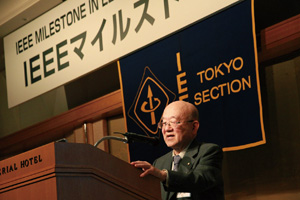
Photo 1. Dr. Eiichi Ohno, IEEE Japan Council History Committee Chair.
IEEE is the world’s largest association of professional engineers in the electrical, electronic, information, and communications fields. It was founded in 1963 out of a merger between the American Institute of Electrical Engineers founded in 1884 and the Institute of Radio Engineers founded in 1912. From the start, IEEE recognized the historical value of achievements made in the fields that it covered, and the History Committee was established as a standing committee to promote such historical information. The History Center was later established in 1980 as a specialized organization working in cooperation with the History Committee, and its base was moved to Rutgers University in New Jersey ten years later. Its activities include the preservation, research, and dissemination of historical assets in the fields covered by IEEE (Photo 2).
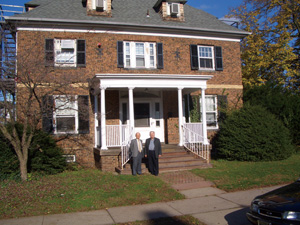
Photo 2. IEEE History Center at Rutgers University.
Dr. Ohno explained that, in addition to the work of preserving records and running a virtual museum, an important activity of the History Center is the IEEE Milestones Program. He described this as a program created in 1983 to provide a system for commending historic achievements that, from among epoch-making innovation in the electrical, electronic, and information fields covered by IEEE, are recognized as having occurred at least 25 years ago and having had a significant regional impact on society or industry.
2.1.2 History of IEEE Milestones
Dr. Ohno introduced key examples of IEEE Milestones from the past. These included Benjamin Franklin’s work on electricity and Volta’s electrical battery in the 18th century; Thomas Edison’s research laboratory, Marconi’s work in wireless communications, and Maxwell’s equations in the 19th century; and the Fleming valve and other inventions such as radio, television (TV), the transistor, and the Internet in the 20th century. He then mentioned the IEEE Milestones dedicated in Japan—such as the Yagi/Uda antenna, Mount Fuji radar system, Tokaido Shinkansen (bullet train), and the first Japanese-language word processor—distributed in the Milestone Triangle whose vertexes indicate the three fields of seminal papers/patents in science and technology, new products and services, and industrial heritages and social infrastructures (Fig. 1). This diagram highlighted the fact that innovations in Japan have generally shown a good balance among these three fields.
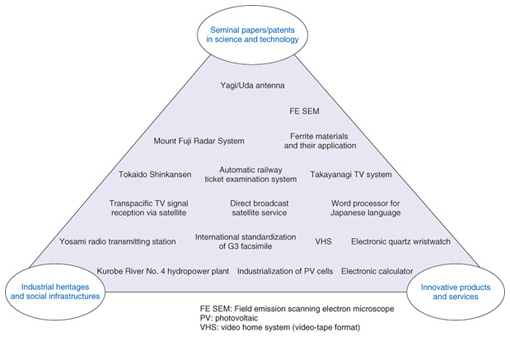
Fig. 1. Milestone triangle with dedicated milestones in Japan.
2.1.3 Social significance of G3 fax international standardization
Dr. Ohno then turned to the Modified Relative Element Address Designate (Modified READ or MR) two-dimensional coding method developed through close collaboration between NTT and KDDI. He stressed that MR, as the most innovative and efficient method for achieving G3 fax, played a major role in its international standardization and that this dedication of the international standardization of G3 fax as an IEEE Milestone explicitly recognized that role. He then pointed out that Japan’s strong leadership here contributed strongly to the international penetration of G3 fax in the 1980s and its subsequent development into a well-established standard.
To conclude his talk, Dr. Ohno stressed that IEEE Milestones can be used to (1) learn from the past and blaze a trail into the future, (2) reassess technologies and engineers, and (3) preserve and share achievements.
2.2 Talk 2: “Redundancy Reduction Coding Methods of G3FAX for International Standardization”
2.2.1 Introduction
The facsimile machine was invented by Alexander Bain in the UK in 1843 some 33 years before the invention of the telephone by Alexander Graham Bell.
Dr. Toyomichi Yamada began his talk by saying the following about it: “From the beginning, fax presented a wide variety of possibilities owing to the convenience it provided in transmitting graphic information in its original form to remote locations. In practice, however, fax integrates a variety of technologies, so it is a more complicated system than TV. This complexity proved to be a drag on its development, and it took many years before fax achieved widespread use. As a result, fax was sometimes called a sleeping giant (Photo 3).
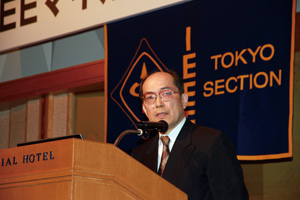
Photo 3. Dr. Toyomichi Yamada, Professor Emeritus of Musashi Institute of Technology.
Next, he explained the principle of fax operation: the transmitter side performs a photoelectric conversion of the graphic information making up the original document and transmits the result over a communications line, and the receiver side synchronizes with the transmitter side to receive, demodulate, and record that information (Fig. 2).
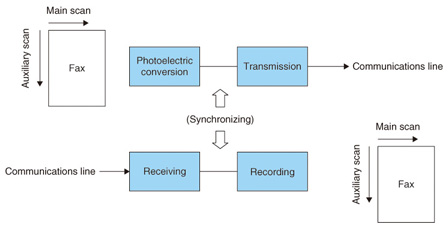
Fig. 2. Principle of fax operation.
In comparing fax with TV, a similar technology, Dr. Yamada explained that—at four million pixels—one frame of a fax transmission represents a high-resolution image having twice as many pixels as a high-definition television (HDTV) image. Moreover, a TV set has no need for recording and fixing technologies, while a fax machine not only requires them, but also needs a motorized paper-feed mechanism for auxiliary scanning. He emphasized that it was for reasons such as these that widespread use of fax in society had to wait for the appearance of semiconductor technologies in the 1970s.
2.2.2 Sowing the seeds of development to meet the growing need for G3 fax
The 1970s saw progress in developing a new fax system that could be used at high speed over the telephone network. Dr. Yamada provided some background about the growing need for such a new system at that time.
“Fax machines were actively used even before the 1970s as specialized equipment for specific types of businesses using leased lines, such as for the transmission of telegrams, meteorological charts, and news photographs. However, as the move toward internationalization in business progressed, the need grew for a fax system that could be used over the telephone network as an alternative to the telex machine, which required a specialized operator. Such a system would have to be capable of making international connections in a more convenient manner and of transmitting faxes at high speed with high quality.”
He then pointed out that the conditions for making such a system possible were coming to fruition in Japan as it headed into the 1980s. In short, the progress made in transistor-transistor logic, large-scale integrated circuits, and other semiconductor technologies in the 1970s, the opening up of the telephone network in 1972, the deployment of high-quality telephone circuits at data rates ranging from 4800 bit/s to 9600 bit/s, and the evolution of the information society (shift toward office automation) provided conditions in which needs and seeds finally matched, thereby awakening the sleeping giant. Furthermore, based on the “100,000-yen fax initiative” promoted by then NTT Vice President Yasusada Kitahara, work began on the development of an easy-to-operate, low-cost, compact terminal (Mini Fax) and a fax communications network service (F-Net) while the introduction of solid-state devices in photoelectric conversion technology and recording technology accelerated. These developments, as Dr. Yamada explained, provided a boost to the practical application of G3 fax, for which a compact configuration, high transmission speeds, and digital processing are essential.
2.2.3 READ method: Japan’s unified proposal for 2D sequential coding
Dr. Yamada also said that the G3 fax system was expected to be capable of transmitting one page of a standard A4-size document within one minute and that a redundancy reduction coding method was essential to achieve that. He explained that technology for suppressing picture quality deterioration was needed to achieve sharp faxes with no transmission errors and that maintaining mutual communication between two parties by an international standard was also an important issue.
A redundancy reduction coding method compresses the amount of data to be transmitted from the original document by using entropy coding (allocating a smaller number of codewords to a state having a high frequency of occurrence), as shown in Fig. 3. As Dr. Yamada recounted, the major problem here was finding a method to discern states with low entropy, that is, states with a high frequency of occurrence.
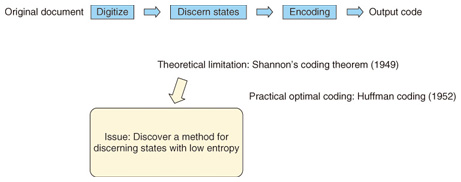
Fig. 3. Redundancy reduction coding method.
Dr. Yamada also explained that redundancy reduction coding methods for G3 fax can be divided into three types—one-dimensional (1D) coding, two-dimensional (2D) multi-line coding, and 2D sequential coding—according to the way in which the correlation between scan lines is used. 1D coding does not make use of the correlation between adjacent scan lines. Rather, it performs run-length (RL) coding for each scan line, where RL is the number of pixels of the same color occurring consecutively. A 1D RL coding method using Modified Huffman (MH) coding was later recommended as a basic method for G3 fax. 2D multi-line coding performs coding for each pair of adjacent scan lines. This form of coding was chosen for government use in Japan in 1975 by the Ministry of Posts and Telecommunications (now Ministry of Internal Affairs and Communications). Finally, 2D sequential coding performs sequential-type coding using correlation with the previous scan line.
Both KDDI and NTT proposed redundancy reduction coding methods for G3 fax to the International Telegraph and Telephone Consultative Committee (CCITT, now ITU-T (International Telecommunication Union, Telecommunication Standardization Sector)). KDDI proposed the Relative Address Coding (RAC) method, which is a 2D sequential coding method, while NTT proposed the Edge-Difference Coding (EDIC) method. However, as Dr. Yamada explained, it was essential to have a single standard so that fax equipment throughout the world could communicate. Thus, to begin with, the need was felt for a unified standardization effort in Japan, and April 1977 saw the beginning of all-Japan studies bringing together industry, government, and academia in a fax-communications-method sectional meeting established by the Ministry of Posts and Telecommunications toward the international standardization of G3 fax. As a result of these studies, it was agreed that a 2D sequential coding method would be Japan’s unified proposal for a redundancy reduction coding method, and that NTT and KDDI would be entrusted with drafting this unified proposal.
Against this background, NTT and KDDI went on to invent the Relative Element Address Designate (READ) method as a unified Japanese proposal integrating the RAC and EDIC methods (Fig. 4) and to formally propose it to CCITT. Consequently, as Dr. Yamada related, agreement was reached at the November 1979 CCITT SGXIV Kyoto meeting to adopt an enhanced READ method called Modified READ (MR), which facilitates the development of G3 fax equipment, as the single international 2D coding standard and G3 fax option that would prevent severe international competition among proprietary systems. This method was formally recommended by CCITT in 1980.
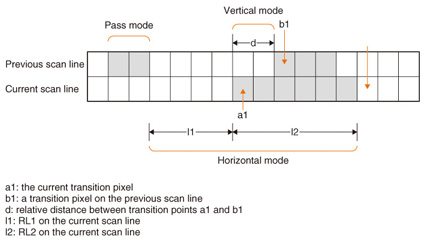
Fig. 4. READ method integrating the RAC and EDIC methods.
2.2.4 Rapid international penetration
Dr. Yamada talked further about the birth of the MR method: “The READ method was designed to perform coding in either the vertical mode or horizontal mode, whichever needed the least amount of coding bits. By contrast, the MR method, which was adopted as the international standard, simplifies the READ method by performing coding in the vertical mode only for | d | ≤ 3 and in the horizontal mode otherwise, where | d | is the relative distance between transition points a1 and b1. This simplification to the original READ algorithm was submitted as a request, which Japan accepted.”
The number of fax machines installed throughout the world increased dramatically following the international standardization of the MR method in 1980. The number broke through the 25 million level in 1996 (Fig. 5). Dr. Yamada spoke passionately about the penetration of G3 fax machines: “It was once said that fax penetrated Japan because of the country’s use of kanji (Chinese characters) but that it was not that much of a necessity in countries using alphabets. However, upon examining the ratios of installed units by region, one can see that the majority of fax machines are actually installed in North America and Europe, which indicates that fax has truly taken root in international society.”
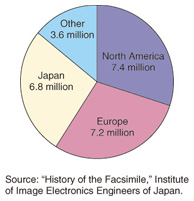
Fig. 5. Number of fax machines installed throughout the world (March 1996).
2.3 Talk 3: “Role and Effectiveness of International Standardization in G3 Fax”
2.3.1 Introduction
In the third talk, Dr. Yasuhiro Yamazaki began by looking back at the history of fax, which, though invented in 1843, took a long time to penetrate society. He talked about the problems affecting fax technology in the 1970s, when the G1 and G2 analog machines needed six minutes and three minutes, respectively, to transmit an A4-size document (Photo 4 and Fig. 6).
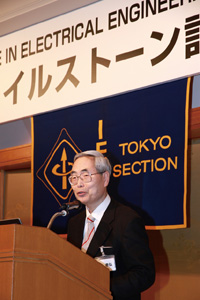
Photo 4. Dr. Yasuhiro Yamazaki, former Professor of Tokai University.
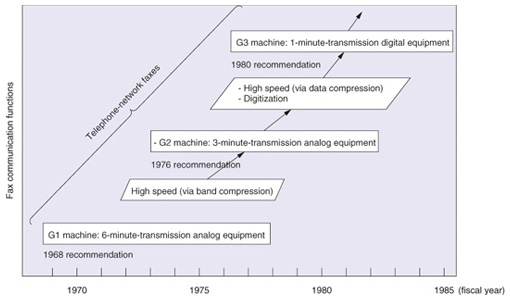
Fig. 6. Transition of telephone-network fax machines from G1 and G2 to G3 machines.
The development target set in the 1970s was a system that, through data compression and digitization, would feature 1) high speeds (where a higher compression rate reduces the communication cost), 2) high reliability (vivid, undistorted image quality), and 3) interconnectability (communication with terminals throughout the world). However, as Dr. Yamazaki pointed out, analog fax communications had been unable to satisfy such requirements, so the problem at that time was to come up with a highly efficient coding method that could enable a one-minute fax machine; that is, a machine that could transmit an A4-size document within one minute. In short, the task was to raise the accuracy of reception, maintain the reliability of fax communications so as not to distort image quality, and achieve a level of interconnectability that would enable free exchanges of documents on a global basis independent of machine model or manufacturer. Dr. Yamazaki stressed that international standardization was indispensible to meeting these goals.
The CCITT study group working on the international standardization of G3 fax met yearly in the late 1970s, holding meetings in Geneva in 1977 and 1978, in Kyoto in 1979 (Photo 5), and in Geneva again in 1980. Looking back at that time, Dr. Yamazaki said that “The international competition at the meetings was fierce. In addition, the official languages at the meetings were English, French, Russian, Chinese, and Spanish, so the Japanese camp had to promote the advantages of its system while trying to overcome a language handicap.”
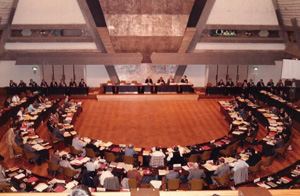
Photo 5. Kyoto international conference hall.
2.3.2 NTT and KDDI collaboration bears fruit.
In Japan, NTT and KDDI each developed an original coding method. However, if the ultimate goal was to achieve an international standard, Japan itself would have to create a single, unified standard in some way.
Regarding the situation at that time, Dr. Yamazaki said that “Both companies came together in a collaborative spirit under the leadership of the Ministry of Posts and Telecommunications. In the end, they came up with the READ method as a unified proposal incorporating the best points of the RAC and EDIC methods developed by KDDI and NTT, respectively; it even surpassed the compression rate of either individual method.” Furthermore, concerning the naming of this coding scheme, he related that, while the name READ was originally simply a merging of the characters making up the RAC and EDIC names, the new method was later released as the Relative Element Address Designate coding scheme.
Dr. Yamazaki also described how an image in a digital fax system is read from left to right (main scan) and from top to bottom (auxiliary scan) and how eight white or black pixels per millimeter are obtained in this way. He explained that there are two million pixels per A4 page even at standard resolution and four million pixels at high resolution, and that the technology for such scanning is complex.
Looking back at that time, Dr. Yamazaki said that “Countries in Europe and North America had adopted 1D coding methods that read in run lengths one line at a time on the main scan and had unified those methods as an MH scheme. By contrast, the READ method proposed by Japan was a 2D coding method that references the previous line while coding the current line focusing on the differences in elements that changed between the two lines.”
2.3.3 Laying the groundwork for global connections
After it was decided at CCITT that the 1D coding standard would be the MH scheme, countries in Europe and North America gradually began to turn their attention to the effectiveness of 2D coding. Dr. Yamazaki reminisced about the time when specific 2D methods were proposed and described how each country had high expectations for such a 2D method. Consequently, when it came time for the final evaluation in 1979, an international transmission experiment by computer simulation was performed. He described how, in this experiment, France provided a standard text document on magnetic tape, Germany provided an actual error pattern collected from telephone lines, and the USA provided a means for distributing the transmitted document by offset printing (Fig. 7).
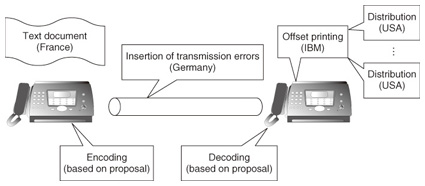
Fig. 7. International evaluation experiment performed in 1979.
Here, as Dr. Yamazaki explained, the evaluation items targeted for standardization were 1) compression rate (rate of reduction in the amount of information to be transmitted by encoding), 2) image quality (reduction in picture degradation caused by transmission errors), 3) complexity (ease of equipment development), and other factors (patents etc.)
Dr. Yamazaki went on to say that “Seven coding methods including the READ method were eventually proposed by a number of countries for standardization. The results of the international evaluation experiment revealed that the READ method had the highest compression rate while no significant difference in image quality could be observed between READ and the other methods. Considering that the READ method had already achieved commercial results, its value was recognized and discussions began to take place around this method.”
He then described how, since its algorithm was somewhat complex, the READ method was revised to create the MR method and simplify the development of fax equipment.
2.3.4 Rapid penetration through a single international standard
As a result of the above efforts, the MR method was finally approved as an international standard for G3 fax (Fig. 8).
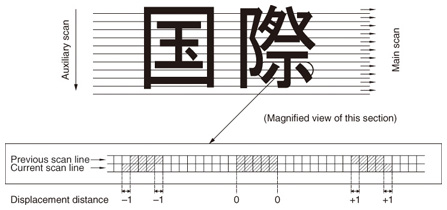
Fig. 8. Principle of the MR method.
In 1978, there were only about 65,000 fax machines in Japan. However, following the international standardization of G3 fax in 1980, the number rose greatly. In fiscal year 2010, the number of shipped units exceeding 15 million (Fig. 9) with the home penetration rate reaching about 60% (including fax units in multifunction devices, personal computers, etc.). Dr. Yamazaki said that “The 2D coding method finally saw the light of day as an alternative to the 1D coding method. But in later fax equipment, the 2D coding method became mainstream and its rate of penetration accelerated on a global scale.” Such was the achievement of G3 fax standardization.
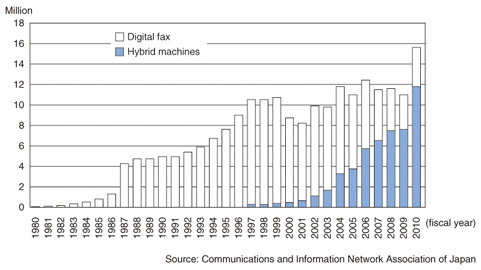
Fig. 9. Number of digital fax and multifunction machines shipped (including those for export).
In this way, a single international standard was achieved for G3 fax resulting in a society that could exchange documents quickly by simply connecting a fax terminal to a telephone line. Dr. Yamazaki concluded his talk by saying “It was exactly this standard that achieved the interconnectability originally set as a target by CCITT. Moreover, because patent usage rights were offered free of charge, a high-reliability fax culture unrestricted by country, area, or manufacturer could grow, enabling fax connections to be made with any fax terminal in the world. Furthermore, by promoting lower prices through mass production, the G3 fax international standard created an opportunity for fax machines to rapidly penetrate not only worldwide business but also general households.”
NOTE: The affiliations of the attendees are those at the time of the report.
